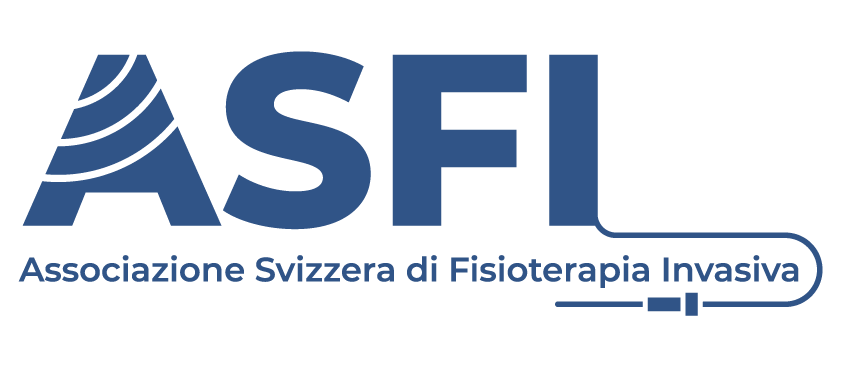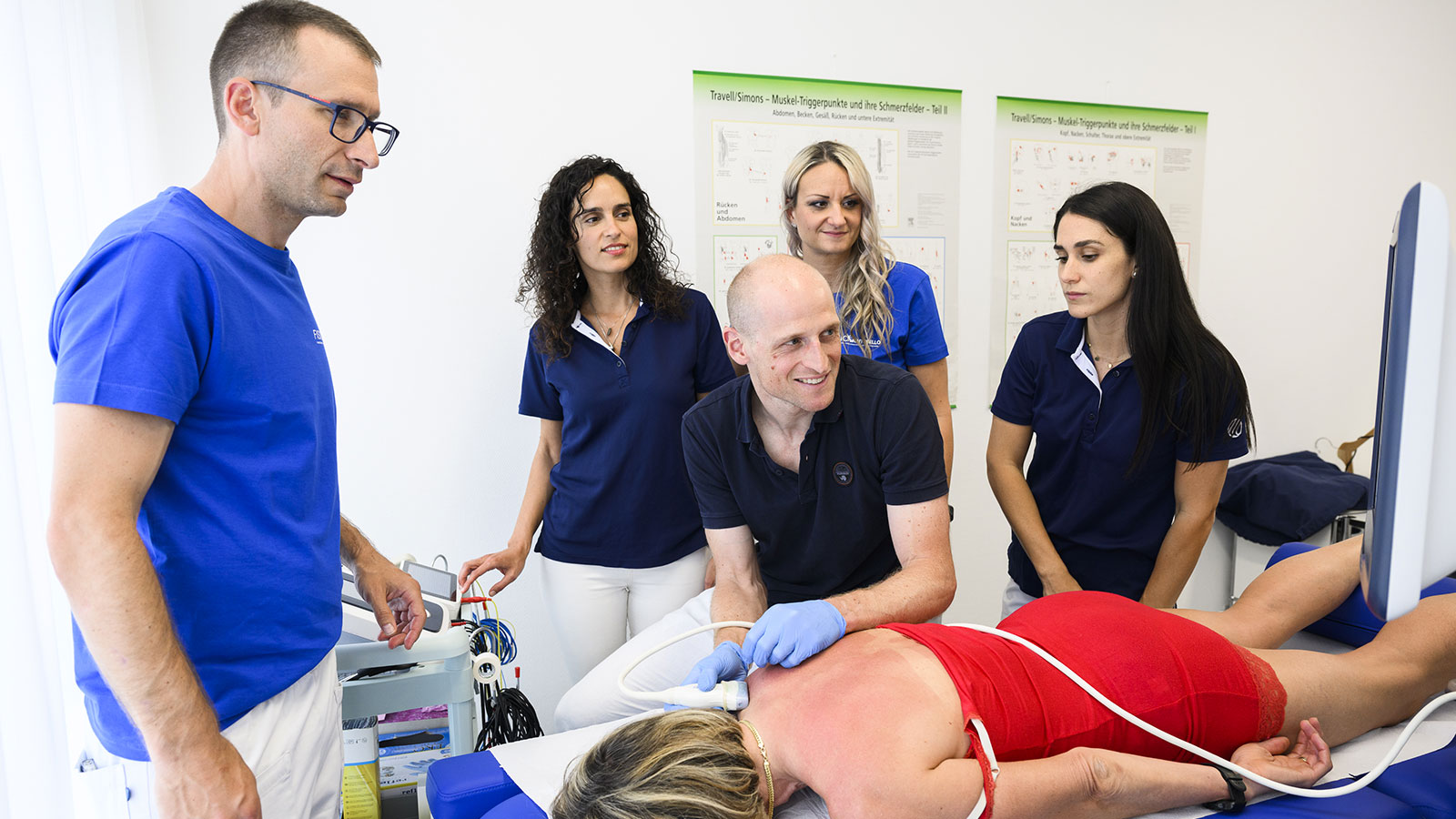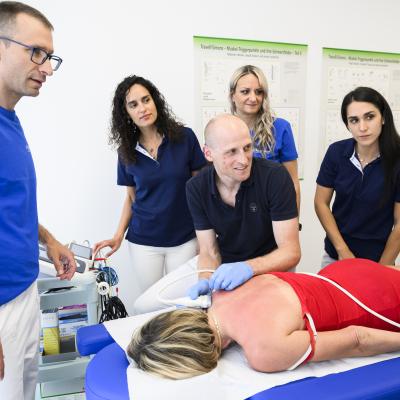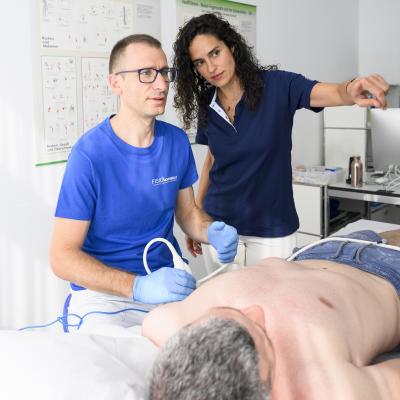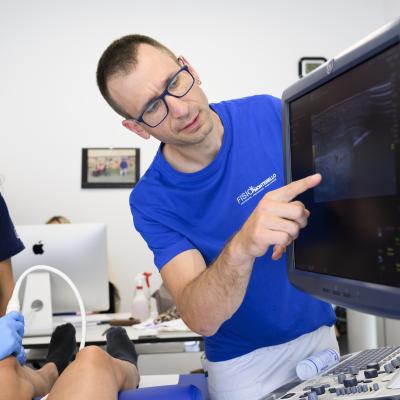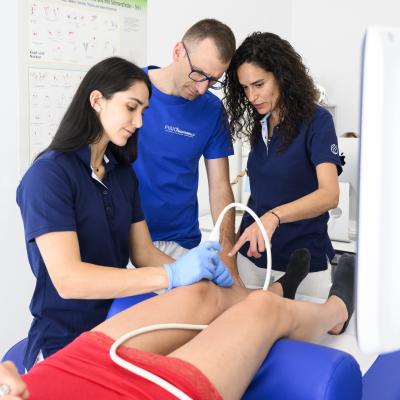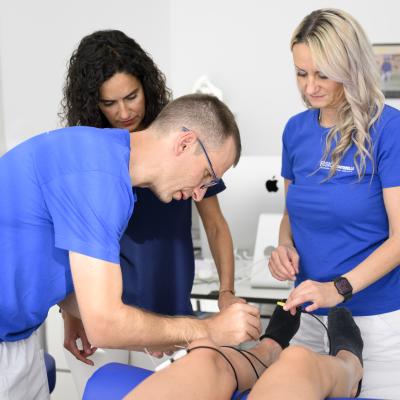In 2001 the first to use the term "invasive physiotherapy" was Professor Orlando Mayoral, who defined the technique as a "physiotherapeutic approach in which normally an acupuncture needle is used to apply a physical agent."
Percutaneous ultrasound-guided electrolysis began to be practiced in 2008 and right from the start it showed a formidable impact in terms of therapeutic efficacy. This technique quickly spread throughout the Iberian soil and today it has nearly 3’000 trained physiotherapists.
Later, percutaneous ultrasound-guided neuromodulation began to be practiced. This technique allows further improvement in the treatment of neuro-musculo-skeletal injuries and dysfunctions in combination with percutaneous electrolysis.
In 2013, Prof. Fermín Valera Garrido and Prof. Francisco Minaya Muñoz published in Spanish the book "Invasive Physiotherapy," successively translated into English in 2015, in which invasive physiotherapy is associated with a group of invasive techniques, defining its new concept as a "manual therapy intervention, in which normally a needle (acupuncture/puncture) is used to diagnose and treat pain of neuro-musculoskeletal origin and functional movement deficits." A third edition of the updated book will be released in 2023.
In the last years, many studies concerning percutaneous electrolysis have been published. They could demonstrate its efficacy and safety for both chronic (tendinopathies, tenosynovitis, bursitis, nerve entrapments and chronic muscle injuries) and acute (acute muscle injuries) problems.
Since 2012, the official university master's degree (MAS) in invasive physiotherapy has been held at the University San Pablo – Madrid. This master is the third best master in the worldwide degrees’ ranking for physiotherapists.
In Switzerland, the first physiotherapist to treat patients since 2015 through invasive physiotherapy was Maria Teresa Escudero Borja at the ARS Medica clinic in Gravesano. In a short time her work became much appreciated due to the very good results experienced by many of her patients.
Thanks to the collaboration between Maria Teresa Escudero Borja and Emanuele Sarcinella, the Swiss Association of Invasive Physiotherapy (SAIP) was founded in 2021, with the intention of spreading the IP techniques in Switzerland.
At present, these techniques are not recognised by either basic or complementary insurance companies and must thereforebe paid for by the patients themselves. However, the situation is evolving and more and more health insurers and insurance companies are recognising the effectiveness of these techniques (excellent effectiveness/cost ratio) and so are reimbursing patients.
